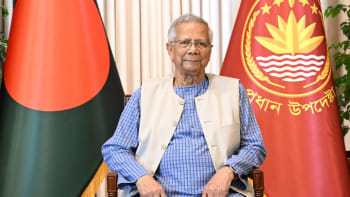Matarbari port to be turned into a deep-sea port

The sea port being built for the Matarbari coal-fired power plant will be turned into a deep-sea port, State Minister for Power, Energy and Mineral Resources Nasrul Hamid has said.
He was talking to journalists after visiting the power plant site in Maheshkhali of Cox's Bazar on Friday.
Prime Minister Sheikh Hasina is scheduled to inaugurate the main construction work of the 1,200 megawatt power plant on January 25. She will also address a public rally at the project site.
Terming the under-construction port Energy-Power Deep-Sea Port, the state minister said it would be initially used for producing power and handling coal. Later, a deep-sea port would be built as an extension to it for multi-purpose use.
“An area at the project site has been designated for setting up an LNG terminal and a coal terminal. Imported coal will be supplied to other coal-fired power plants across the country from this terminal.”
The ultra-super critical Matarbari power plant would require around 8,000 to 10,000 tonnes of coal daily, he added.
State-owned Coal Power Generation Company Bangladesh Limited (CPGCBL) is implementing the Tk 35,984 crore project in Matarbari and Dhalghata of Maheshkhali upazila.
The government appointed a Japanese consortium, made up of Sumimoto Corporation, Toshhiba Corporation and IHI Corporation, as the contractor of the project.
Of Tk 35,984 crore, Japan International Cooperation Agency (Jica) will provide Tk 28,939 crore and the rest will be shouldered by the Bangladesh government.
Some preparatory works of the project has been done in the last two years. Those include acquiring and developing land, digging a 2.8-kilometre channel and building the site office.
Although the project was expected to be completed by 2020, the deadline has been deferred to July 2024. Among other reasons for the delay in implementation of the project was the brutal militant attack at Holey Artisan Bakery in the capital's Gulshan on July 1, 2016. The attack left 20 people, including seven Japanese, killed.
The state minister hoped the project would be completed by 2023. “We have already completed 18 percent work of the project.”
Nasrul said the Matarbari power plant was the Jica's largest project in the world.
Japanese ambassador to Bangladesh Hiroyasu Izumi and Chief Representative of Jica in Bangladesh Takatoshi Nishikata accompanied the state minister.
Nishikata said his organisation agreed to finance the project considering the geographical location of the project site and Bangladesh's development potentials.
Asked about the environmental impact of the project, he said both development and environmental conservation should be pursued.
Ambassador Hiroyasu Izumi said the Japanese government was very happy to be involved in the project. “Our diligent engineers with the help of the workers may accomplish the project in time.”
The project comprises construction of two 600 MW power plants, a deep-sea terminal with jetty and yard facilities, a 14.5-km long port channel (250 metre wide and 17 metre deep), a high voltage power line, development of a township, local infrastructure, rural electrification, rehabilitation of people and purchase of land.
The government has a plan to build several more coal-fired power plants in the adjoining area, the state minister told reporters.
Project Director Abul Kashem, also the managing director of CPGCBL, said they were developing 1,600 acres of land in the area. The 1,200 MW power plant would be set up on around half of the land and the rest would be left for setting up new power plants in future, he added.

 For all latest news, follow The Daily Star's Google News channel.
For all latest news, follow The Daily Star's Google News channel. 








Comments